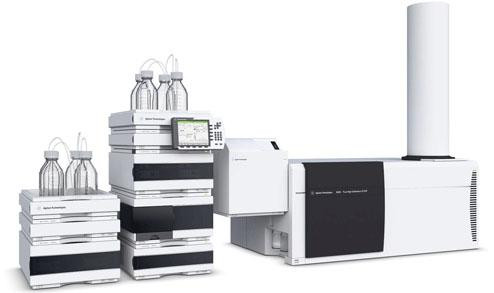How Advances in Superior Execution Countercurrent Chromatography Advantage the Physicists
Since the time scientists started utilizing isolating pipes to separate mixtures by dividing, they have perceived the likely advantages of fluid/fluid chromatography, referred to the present time as countercurrent chromatography (CCC). However in spite of this information, strong/fluid chromatography methods, like HPLC or glimmer, have turned into the workhorses of filtration. Up to this point, CCC was fundamentally a procedure for normal items or scholastic exploration and was not really utilized in standard decontamination. Tragically, early CCC instrumentation was inadequately designed and experienced lethargic speed of division, a blend that prompted irrelevant reception as an integral and symmetrical chromatography method.
Anyway another age of elite execution countercurrent chromatography (HPCCC) instrumentation has prompted the resurrection of fluid/fluid chromatography in the 21st century and in this way offering a more prominent advantage to the scientists.
CCC can fundamentally further develop a scientists usefulness and separate mixtures that were beforehand undeniably challenging to disengage or uneconomical to create. Because of the enormous contrast in available fixed stage between fluid/fluid to strong/fluid chromatography - ordinarily 70-80% contrasted with 5-10% - the loadings are drastically higher, shortening the quantity of test infusions expected to handle a group. Besides, in light of the fact that both versatile and fixed stages are fluids, we gain two further significant efficiency benefits.
To begin with, test solvency issues are decreased in light of the fact that one's possibilities for infusing test onto the segment have been significantly increased. Utilizing CCC, one can infuse an example into both of the singular portable or fixed stages or a combination of the two, whichever blend gives the most noteworthy stacking per infusion. The utilization of two fluids is likewise helpful once the example is on the section, in light of the fact that regardless of whether the example crashes out of arrangement, it doesn't make the segment block, halting the chromatography.
Another usefulness benefit is that with CCC there is no chance of irreversible adsorption happening either onto or into the fixed stage. Recuperations are dependably exceptionally high, and it is sure that the whole example will elute from the section.
With every one of the benefits that CCC can bring to the usefulness of physicists, why has it been so ineffectively took on?
The original of CCC instruments presented in the mid 1980s were known as rapid countercurrent chromatography (HSCCC) machines and were inadequately embraced for three reasons. The previously was speed of partition - HSCCC instruments perform detachments over a time of hours, rather than the several minutes run of the mill HPLC. Also, the instrumentation was problematic and consequently researchers immediately became reluctant to hazard their important mixtures. At long last, the scope of gear accessible was poor and regularly just accessible at the preparative scale, requiring gram-size test infusions. This is an issue for scientific experts working in little particle manufactured science, who at first might have had tests accessible just in many milligram sums that required a long time to deliver. Hence, the whole amount of a significant example would need to be infused - a danger a scientist is hesitant to take.
The mix of these elements guaranteed that CCC was just utilized as a procedure of last decision, rather than embraced as an integral and symmetrical fluid chromatography strategy that could drastically affect the efficiency of scientific experts - a decontamination cycle that requires hours to perform is inadmissible.
Work started during the 1990s to work on the working exhibition. The improvement of superior execution counter-current chromatography (HPCCC) defeated issues of the hotness created in the instrument's bearing, presently not the need to bolt machines to the seat, rewind sections later a couple of runs, fix flying leads during a partition and as of now not the requirement for working in the back room because of the commotion, which was enormously decreased. They were likewise ready to get through the 240g hindrance which made it conceivable to foster strong insightful scale instruments, utilizing little bore sections, with the goal that milligram amounts of compound could be handled.
The advantages of HPCCC to scientists not just works on the efficiency at all scales additionally a strategy can be applied across the entire scope of extremity and to both little and enormous engineered particles, peptides, and normal items. Since HPCCC is a high-limit strategy, it is turning into the best option for researchers when they need to deliver enormous amounts of target compounds.
This is particularly appealing when a compound and its analogs are distinguished as a lead up-and-comer needed in steadily expanding amounts as they progress through the drug improvement process. Utilizing HPCCC instruments scientific experts can focus on their item improvement process, not filtration/chromatography redevelopment, as scale increments.
Performing increase of cleansing between various sizes of HPCCC instruments is fast and basic. One basically utilizes the volumetric proportion between the two segment volumes one wishes to use to decide the new example volume and portable stage follow rate.
A Further huge advantage concerns test solvency. Rather than the solvency of tests turning into a restricting element, they incline toward unimportance in light of the fact that the example can be infused onto the segment in either the versatile, fixed, or a combination of the two stages, without influencing the presentation of the chromatography.
Physicists and researchers are presently ready to us HPCCC in their labs and utilize high limit division instruments on the benchtop. It is conceivable with siphons that work at 50mL/min to effortlessly process up to 200g of rough material each day and possibly up to 400g. This is a huge development in diminishing the chromatography bottleneck brought about by the throughput imperatives of fluid/strong chromatography strategies or the solvency of tests. HPCCC can assist with tackling these issues.
For More Info:-Used Laboratory Instruments For Sale

Comments
Post a Comment